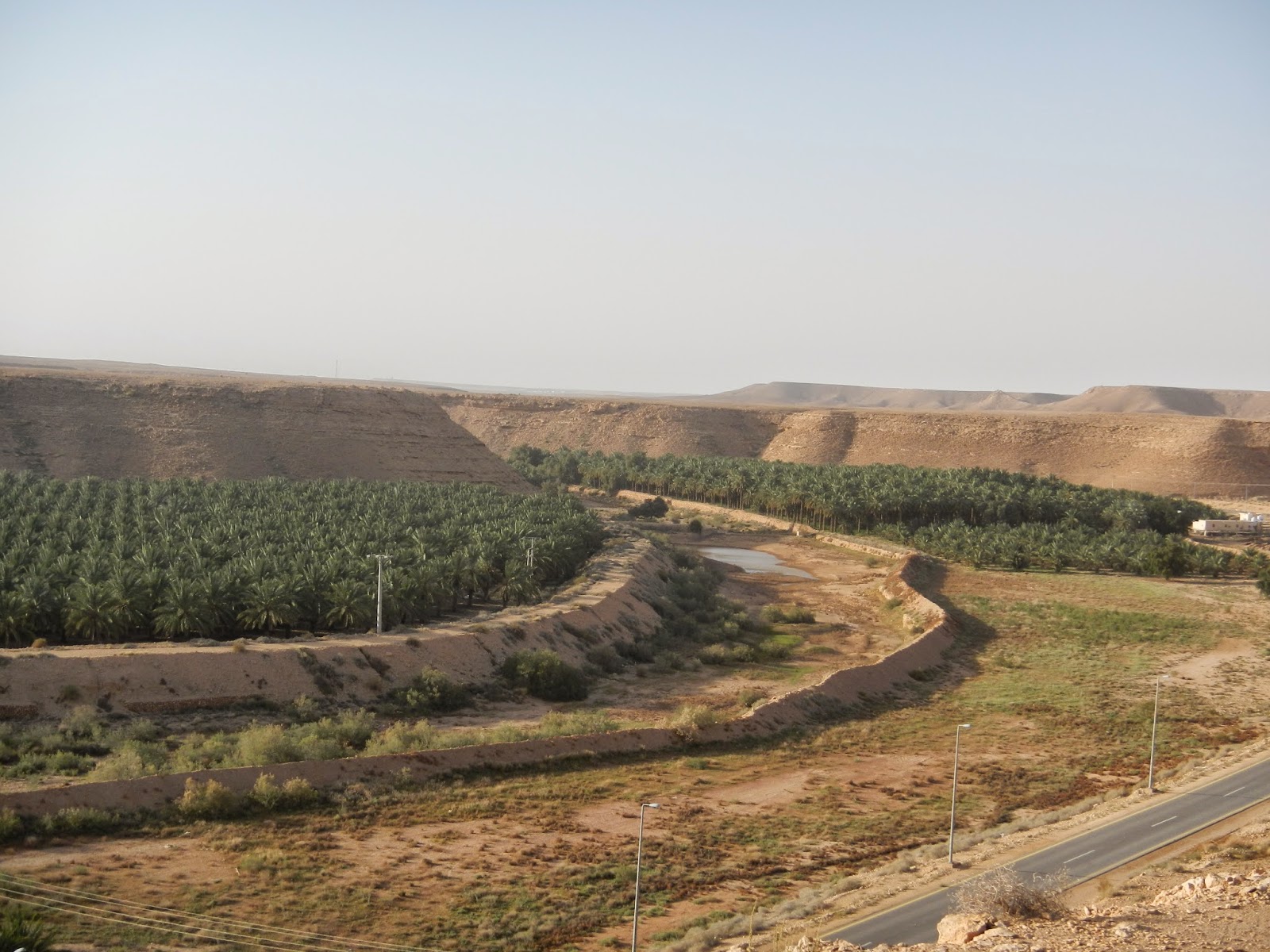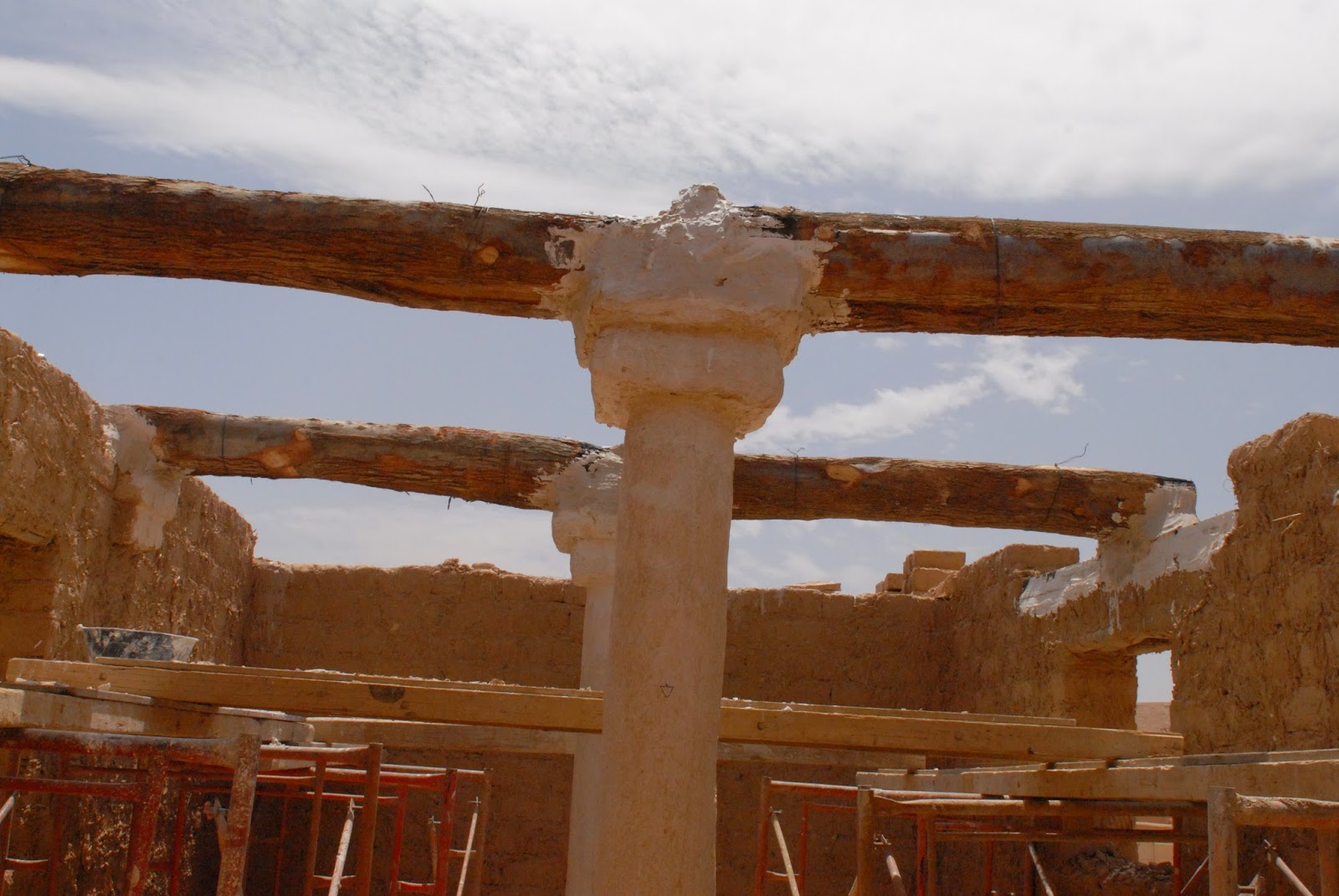Saturday, April 26, 2014 -  cultural heritage,cultural preservation,Saudia Arabia
cultural heritage,cultural preservation,Saudia Arabia
 No comments
No comments
 cultural heritage,cultural preservation,Saudia Arabia
cultural heritage,cultural preservation,Saudia Arabia
 No comments
No comments
Al Ghat, A Hidden Treasure, Sets Example for Cultural Property Heritage Preservation
 |
| Al Ghat valley. Photo by Christiana O’Connell-Schizas |
by Christiana O’Connell-Schizas
Al Ghat, a hidden treasure amongst the mysterious sands of Arabia, has set a prime example for other culturally rich rural villages and towns like itself; their renovation and restoration projects are attracting more and more people who are slowly starting to appreciate its patrimony and its eminent date plantations.
Located less than a three hour drive northwest of Riyadh, Al Ghat, with a population of less than 20,000, has a 30-bed hospital; a community center; two high schools; and hundreds of date farms. Unlike many other regions in the Kingdom, Al Ghat has sustainable soil and available water sources: three natural water springs; a well dating to the Prophet himself (Peace be upon Him); and, depending on the time of year, waterfalls.[1] In old Al Ghat village, one can find dilapidated mud-straw houses, the last of which were abandoned 40-50 years ago (these residences were made of the same materials used 500 years ago.)
Home of the Saudi dates
Traditional agriculture was confined to small plots along the valley banks, producing small harvests of dates, wheat, and various fruits and vegetables. In the 1980s, to encourage agriculture, the government distributed land, dug wells, and purchased farming tools and fertilizers which led to a huge expansion of Al Ghat’s farming sector. According to data from the Food and Agriculture Organization (FAO) of the United Nations, Saudi Arabian date production now represents approximately 12 to 14 percent of world production.[2]
 |
| Our camp site on the plantation. Photo by Nehme El Jorr |
A few weeks ago, with some family and friends, I was fortunate enough to be welcomed and treated to the hospitality of a local date farmer. We camped out on his plantation for one night and he shared the following information with us: One date bearing palm tree can easily produce 200 kilograms of dates per season. Depending on the variety of date, each kilo is sold for SAR 20 (equivalent to approximately $5)[3]. The plantation has a modest 100 palm trees so if he sold his product, he would receive a gross income of about SAR 400,000 ($106,600) per season.
Al Ghat dates have even made an impact in London with the opening of the Bateel coffee shop in August 2011 on a corner of New Bond Street and with Saudi artist Budur bint Abdullah Al-Sudairy's piece titled: ‘Al-Ghat Dates: Candy for the rich, Nourishment for the poor’ which the Ulysses Prize at the London Art Biennale, 2013.
Heritage projects
 |
| A dilapidated house in Al Ghat. Photo by Costas S. Schizas |
Aside from the remarkable date farms, Al Ghat is recognized for its cultural heritage and, in contrast to many Saudi towns, its commended efforts to maintain it.
One way the Al Ghat Municipality is preserving its heritage is by renovating many of the old residences and turning them into a luxurious $1,000 per night hotel. It is unclear how many of the old houses will be restored to their former glory and the project is far from complete. This could probably be attributed to a lack of funding, and the fact that the same tools, methods and materials are being used for the reconstruction. This is extremely time consuming as the bricks have to be prepared in the same way as they were hundreds of years ago. Mud is obtained and mixed with straw (the binding agent), and sand (to stop the bricks from breaking). The mixture is subsequently packed into brick shaped molds and left in the sun to dry over an extended period. During the building process, wet mud is used in place of cement to hold the bricks together.
 |
| A caved in roof with more dilapidated houses in the background. Photo by author. |
The roof’s structural beams are made of acacia wood that is scarcely obtained from the surrounding desert. Then, dry palm branches or thin bamboo shoots, found by the riverbanks, are tightly tied together to form a type of mat that is laid on the beams before a thick layer of mud is spread over the said to fill the gaps. This provides good insulation against the blazing desert sun.
Some of the completed projects include the old market and the central square of the old town. The Saudi Commission for Tourism and Antiquities (SCTA) worked effortlessly with the Al Ghat Municipality to ensure its unique cultural heritage is preserved. Their efforts have brought many tourists to this small town, local and expatriates alike. Special weekly festivals reminiscent of the Najd traditions and souks are arranged in the town on Thursdays and the local market offers farm products and tools.[4]
The other significant project has been the Al Ghat Municipal Museum. The museum was the palace of the late Prince Nasser bin Saad Al-Sudairy that was donated to highlight Al Ghat's social life and history throughout the ages and the contribution of its residents in the foundation of the Saudi State.[5] It exhibits Paleolithic tools and petroglyphs found in and around Al Ghat; traditional agriculture, clothing and crafts; traditional hunting using ancient guns, dogs and falcons; the governors of the village appointed by the King; the British explorers that passed through Al Ghat, such as William Gifford Palgrave; and the ‘jussah’, the room in the home set aside for the preservation of dates.
 |
| The production of the said bricks with some of the restored buildings in the background and a workman's portacabin on the right. Photo by author. |
 |
| Long barks of acacia wood being used as roof beams. Photo by Costas S. Schizas. |
"Al-Ghat Becoming a Tourist Destination." Arab News, 23 Mar. 2012. Web.







